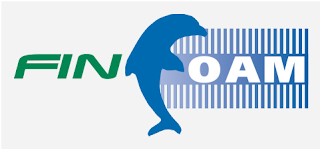Putting Off Air-Cooled Heat Exchanger Cleaning Is Expensive
BLOG

Since air-cooled heat exchangers (ACHEs) are externally only exposed to atmospheric “air,” having them cleaned is a job that very few people ever think about. If it’s part of your responsibility as a maintenance manager or planner, you may also even find it difficult to allocate the funds for it when it does need to be done. Because cleaning ACHEs is frequently not on a planned maintenance schedule, but rather comes to mind only when the weather gets hot, some plant personnel may not consider it critical to the operating system until it impacts production and efficiency. But as you eventually have to think about the costs related to a cleaning job, it might be helpful to think from the opposite perspective: how much will it cost to not have them cleaned?

What’s the Big Problem? An ACHE temperature control system depends on its inner coil (tube) and its thousands of adhering fins to transfer cooling from the ambient temperature air passing through them being motivated at high velocity with a fan. The finned tubes are designed to have as much combined surface area as possible exposed for efficient heat transfer, but when they are covered with a layer of dirt,residual film,or other fugitive debris, that surface cooling effect is reduced. The buildup effectively insulates coils and fins, thus defeating or diminishing their effectiveness. Air-cooled heat exchanger cleaning to remove the external buildup and insulating deposits can get the heat transfer process working efficiently again, very typically within just a few hours, while the unit remains in service (with the fan off). The Cost of Waiting Dirty ACHEs waste money and energy every day by forcing the entire system to work longer and harder to accomplish its task of regulating temperature. In addition, unless they are thoroughly cleaned, some adhering debris can compound the damage by permanently corroding the coils and fins. Regular heat exchanger cleaning removes corrosive substances before they can begin eating away at the equipment, eliminating the need for those related expensive repairs down the road. Given how costly these forms of corrosion can be, it is far less expensive to have dirty heat exchangers cleaned by a fast-working, safe, expert team of technicians. The highly proprietary, ultra-proven FINFOAM cleaning process and the techniques employed to clean these systems and units save money for everyone, with a bonus that they create no environmentally harmful residue that must be removed at the end of the job.
Press Contact
- Emily Martin
- Marketing Manager
- 100 N. Main Street
- Sumter, SC 29150
- (803) 773-8005
- emartin@thompsonind.com
